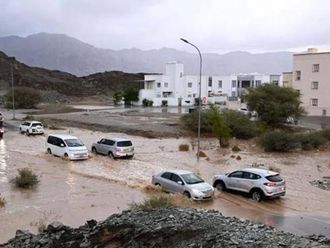Muscat: Sultan Qaboos University (SQU) scientists have discovered significant increase in mean temperature in the Sea of Oman.
Dr Y.V.B. Sarma and Dr Anesh Govender from SQU’s Department of Marine Science & Fisheries of the College of Agricultural & Marine Sciences recently conducted the study by analysing a 50-year (1961-2010) record of sea surface temperature (SST) off Muscat and off Masirah along Oman.
The two experts investigated the changes in the SST and associated environmental parameters such as rainfall and sea surface height in the Sea of Oman and the western Arabian Sea off Masirah Island.
During their studies, the sea surface height (SSH) anomalies showed large variability in the sea level that occurred simultaneously in the Sea of Oman and along the east coast of Oman. “Analysis of algal blooms indicate that during the post-1990s the large fluctuations in the SSH are associated with harmful algal blooms that resulted in fish mortality in the region,” according to a SQU press release today.
The variability of SST was fairly constant in Sea of Oman while it was declining off Masirah after 1981-1991. The decadal signal of SST in both areas indicates a regime shift in the SST towards warmer ocean surface.
The researchers explained that the local weather and marine environmental factors changed around Oman in recent years making it imperative to investigate the SST dynamics of the seas around Oman.
“Anomalous increase in the sea surface temperature (SST), by two degree Celsius, was noticed weeks before intense weather systems striking Oman coast during 2007 (Gonu) and 2009 (Phet)”, Dr Sarma said.
Increased summer heating and reduced winter cooling rendered upper oceans warmer after 1984 with an increase in SST of 0.32 degree Celsius off Muscat and 0.53 degree Celsius of Masirah above the annual mean.
Dr. Sarma fears that this may lead to the upper ocean becoming acidic and unsupportive of marine life.
The SSH variability is considerably large particularly post-1990s and the harmful algal blooms (HABs) events increased ever since.
The increase in the frequency of harmful algal blooms and intense weather systems noticed during this decade (2000-2010) are associated with an increase in the SST.











